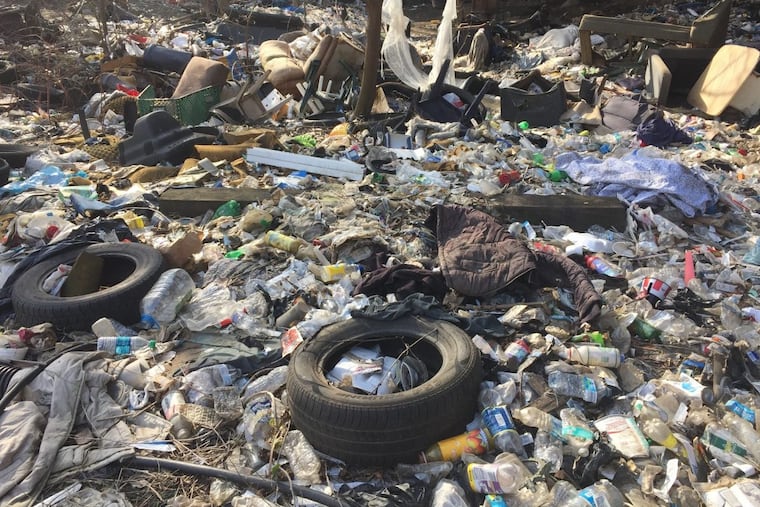Where were safe spaces when black and brown people were addicted to crack? | Solomon Jones
Coddling mostly white addicts amplifies the racism that criminalized black and brown crack users in the '80s and '90s.

In the early 2000s, when I first wrote about the influx of young white heroin users into our city, the purveyors of political correctness had not yet coined the term "opioid crisis." Nor had America realized that the drug war had created collateral damage beyond black and brown communities.
Now, nearly 20 years later, the trickle of addicts who once came to our city for the purest heroin on the East Coast has swelled into a full-blown flood. The Medical Examiner’s Office estimates that 1,200 people died of overdoses in Philadelphia in 2017. Most were young and white. And rather than treat the new wave of heroin addicts to the jail cells that welcomed black crack users a generation ago, Philadelphia has proposed what the Kenney administration is calling Comprehensive User Engagement Sites (CUES).
These are places where intravenous drug users would be allowed to inject illegal drugs in private facilities with the city's blessing. I am adamantly opposed to that strategy. Not only because coddling mostly white addicts amplifies the racism that criminalized black and brown crack users in the '80s and '90s, but also because I have personally experienced addiction. And after 21 years clean, I'm certain that if someone had enabled me to use drugs without fear of consequence, I would still be trapped in a blinding cloud of crack smoke.
Proponents of safe injection facilities point to reams of research that say such facilities save lives by preventing overdoses in Europe and Canada. But I have been trapped in the throes of addiction, and while I wholeheartedly support the prevention of overdoses, I know in my core that an existence as a slave to a drug is no life at all.
Mayor Kenney, in a statement, said he believes just the opposite. "I am supportive of CUES because I believe that creating an environment where people are safe and can get the help that they need can help them get their lives on track," said the statement. "It's difficult to do that when you're kneeling next to somebody on a mattress under a bridge.
"This is the most humane way to do it and a way that we will hopefully save lives. Most drug users eventually get treatment and recover. But recovery can take many years, and most who suffer from addiction have to try many times before they ultimately succeed. CUES is designed to engage drug users and encourage them to go into treatment, and also to help them stay alive until they do recover. We know that CUES will not end this crisis, they are just one part of our long term strategy to fight this epidemic."
Of course, not every public official agrees.
"It presents significant public safety concerns," Pennsylvania Attorney General Josh Shapiro told me in an interview on Praise 107.9 FM. "And you would need changes to state and federal law in order for these sites to operate legally. Furthermore, there is absolutely no safe way for a drug addict to inject him or herself with heroin. … People are dying from this every day.
"These are dangerous drugs with devastating consequences," Shapiro told me. "Not just on the individual users, but also on the community. And I also fear that the negative impact of a site like this will likely be held by communities that are already suffering, communities that already face serious economic and educational challenges and hardships. So I guess while some studies show that the sites may offer some benefit to those facing addiction, I don't think there's clear evidence. And I'm focused less on creating pathways to safe injection sites, and more on creating pathways to effective treatment for those who are in need."
City Councilwoman Maria Quiñones-Sánchez, who represents Philadelphia's Seventh District, where the hard-hit Kensington neighborhood is located, also has questions about the implementation of the Kenney administration's plan.
"I never say no to anything that has the potential to save lives," Sánchez told me. "What I'm saying is, don't do a top-down decision without a discussion about the impact … What happens to the person selling the drugs? Does he get a pass if he doesn't have any other job? What happens to the public safety strategy? We don't have a public safety strategy. We've allowed the occupation of — we have four [heroin] encampments going on right now in the neighborhood."
And therein lies the problem. Safe injection sites are most often placed in communities like the one Sánchez represents. Black and brown communities that are trapped beneath the weight of poverty and have never experienced the compassion suddenly heaped upon young, white addicts who come here from other places.
"This is about race, and this is about economics," Sánchez told me. "We have a system that is racist in its approach, in its treatment, in its practices, and we've got to own that."
Then we have to come up with a comprehensive strategy to fix it.
Solomon Jones is the author of 10 books. Listen to him weekdays from 10 a.m. to noon on Praise 107.9 FM.